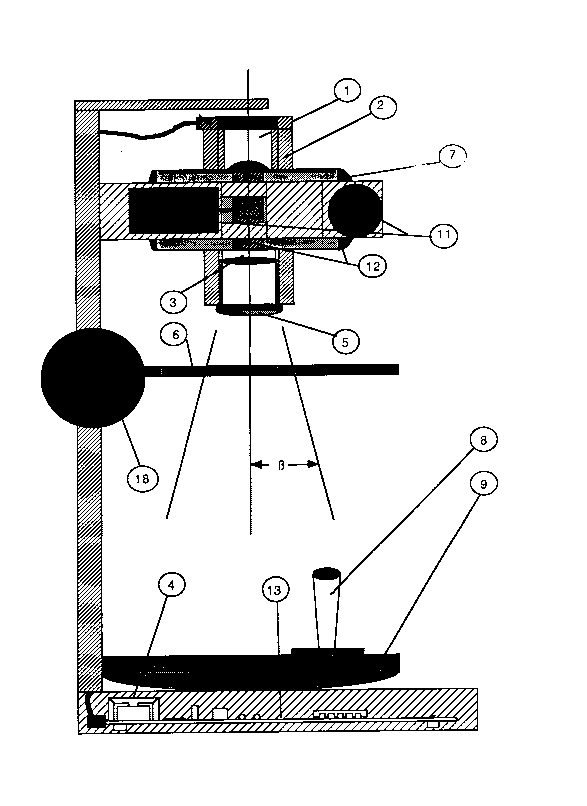Some of the information on this Web page has been provided by external sources. The Government of Canada is not responsible for the accuracy, reliability or currency of the information supplied by external sources. Users wishing to rely upon this information should consult directly with the source of the information. Content provided by external sources is not subject to official languages, privacy and accessibility requirements.
Any discrepancies in the text and image of the Claims and Abstract are due to differing posting times. Text of the Claims and Abstract are posted:
| (12) Patent Application: | (11) CA 2113295 |
|---|---|
| (54) English Title: | LENS MARKINGS VIEWER |
| (54) French Title: | DISPOSITIF D'INSPECTION DE LENTILLES |
| Status: | Deemed Abandoned and Beyond the Period of Reinstatement - Pending Response to Notice of Disregarded Communication |
| (51) International Patent Classification (IPC): |
|
|---|---|
| (72) Inventors : |
|
| (73) Owners : |
|
| (71) Applicants : | |
| (74) Agent: | |
| (74) Associate agent: | |
| (45) Issued: | |
| (22) Filed Date: | 1994-01-12 |
| (41) Open to Public Inspection: | 1995-07-13 |
| Examination requested: | 1994-03-24 |
| Availability of licence: | N/A |
| Dedicated to the Public: | N/A |
| (25) Language of filing: | English |
| Patent Cooperation Treaty (PCT): | No |
|---|
| (30) Application Priority Data: | None |
|---|
In the process for producing ophtalmic progressive lenses, it is common practice to
inspect lenses using a lamp and the effects of ambiant light refraction to detect surface
imperfections as well as for retreiving manufacturers markings. Such markings
containing key process information are mandatory for further finishing and cutting
processes of the ophtalmic progressive lenses. In this invention, light is generated by a
coherent light source at a given wavelenght that may range between 620 and 670
nanometer and collimated prior to being difused over the surface of the lens under
inspection. The lens under inspection may be moved at an angle .beta. in the path of the
difused light to enhance light refraction occuring onto the markings and other surface
imperfections. The light is thus refracted to a projection surface for viewing by the
human eye (operator) to clearly examine the markings as well as the surface
imperfections before and after coatings and other treatments. In this invention, the
optical aparatus is contained into an instrument which encompasses all of the
necessary mechanism to enable the examination of most types of ophtalmic lenses.The angle .beta. may be modified by the operator to adapt to different lenses curvature.
This is achieved by manipulation of a controller arm until optimum viewing is achieved.
The light source intensity as well as focus may be adjusted during the process of
examining lenses.
Note: Claims are shown in the official language in which they were submitted.
Note: Descriptions are shown in the official language in which they were submitted.

2024-08-01:As part of the Next Generation Patents (NGP) transition, the Canadian Patents Database (CPD) now contains a more detailed Event History, which replicates the Event Log of our new back-office solution.
Please note that "Inactive:" events refers to events no longer in use in our new back-office solution.
For a clearer understanding of the status of the application/patent presented on this page, the site Disclaimer , as well as the definitions for Patent , Event History , Maintenance Fee and Payment History should be consulted.
| Description | Date |
|---|---|
| Inactive: IPC from MCD | 2006-03-11 |
| Time Limit for Reversal Expired | 1996-07-13 |
| Application Not Reinstated by Deadline | 1996-07-13 |
| Inactive: Adhoc Request Documented | 1996-01-12 |
| Deemed Abandoned - Failure to Respond to Maintenance Fee Notice | 1996-01-12 |
| Application Published (Open to Public Inspection) | 1995-07-13 |
| All Requirements for Examination Determined Compliant | 1994-03-24 |
| Request for Examination Requirements Determined Compliant | 1994-03-24 |
| Abandonment Date | Reason | Reinstatement Date |
|---|---|---|
| 1996-01-12 |
Note: Records showing the ownership history in alphabetical order.
| Current Owners on Record |
|---|
| ROGER DORE |
| Past Owners on Record |
|---|
| None |